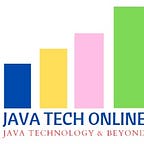Types of NoSQL Databases and their Features
If you’re looking to explore the world of database management, you’ve probably heard of NoSQL databases. Unlike traditional SQL databases, NoSQL databases offer a flexible, scalable approach to data storage and retrieval that’s particularly suited to modern web applications.
But with so many different types of NoSQL databases available, it can be difficult to choose from. In this article, we’ll take a closer look at some of the most popular types of NoSQL databases, examples, features of each.
From document-oriented databases like MongoDB to key-value stores like Redis, we’ll help you understand the strengths and weaknesses of each type of database, so you can choose the right one for your next project. So, read on to discover the fascinating world of NoSQL databases.
What is NoSQL Database?
NoSQL (Not Only SQL) databases are non-relational databases that do not use the traditional tabular relations used by SQL databases. Unlike SQL databases that use structured query language, NoSQL databases use different query languages and data models, such as key-value, document, column-family, and graph.
Examples of popular NoSQL databases include MongoDB, Cassandra, Couchbase, Redis, and Amazon DynamoDB.
Where are the NoSQL Databases Used?
NoSQL databases are often used for handling large volumes of unstructured or semi-structured data, such as social media data, user-generated content, and web content. They are also often used in distributed systems where scalability, performance, and fault-tolerance are critical.
What are the Types Of NoSQL Databases?
There are several types of NoSQL databases, each with its own unique data model and query language. The main types of NoSQL databases are:
- Key-Value Stores: These databases store data as key-value pairs and are highly scalable and performant. Examples include Redis, Riak, and Amazon DynamoDB.
- Document Databases: These databases store data in a document-oriented format, such as JSON or BSON. They are flexible and can store semi-structured data. Examples include MongoDB, Couchbase, and Apache CouchDB.
- Column-Family Stores: These databases store data in columns instead of rows and are optimized for managing large amounts of data. Examples include Apache Cassandra and HBase.
- Graph Databases: These databases use graph structures to store and represent data, making them ideal for managing complex relationships and connections. Examples include Neo4j, OrientDB, and Amazon Neptune.
- Object Databases: These databases store objects rather than data in tables, making them suitable for object-oriented programming. Examples include db4o and Objectivity/DB.
It’s worth noting that some databases can fit into multiple categories or have features that overlap between categories.
What are the features of NoSQL Databases?
However, there is a list of benefits and even drawbacks of using NoSQL Databases. Despite the fact that each NoSQL database offers its own special features, but at a high level most of NoSQL databases have some common features as below:
1) Flexible schemas: Unlike relational databases, we don’t need to specify and declare a table’s schema before inserting data.
2) Horizontal scaling: NoSQL databases have a range of scaling choices available. Earlier, database scaling has been a major concern for big applications and choices have been either limited in number or costly to implement.
3) Fast queries due to the data model: Data model in NoSQL database offers quick execution of queries.
4) Ease of use for developers: Multiple surveys indicate that the NoSQL databases are simple and easy to use.
5) Distribution Capabilities: NoSQL databases can offer data distribution at a world-wide scale. This is accomplished through several cloud regions and data centers for read-and-write operations throughout several locations.
